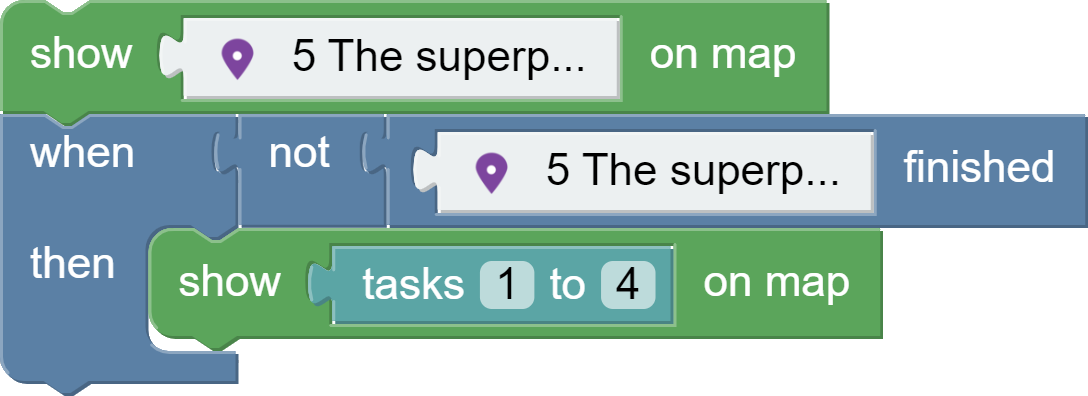Here are some typical examples for intermediate users.
Using ON TRACK condition
ON TRACK condition will allow game creators to distribute teams to different tracks, so you can use different conditions for different teams. In the game tracks are assigned automatically, so it is important to understand the logic behind tracks.
To define a track, use ON TRACK conditional block in your game. There are three basic scenarios:
- Not using ON TRACK # block. That means that all the rules apply to all the teams. Teams are not divided to tracks.
- Using ON TRACK 1, ON TRACK 2 etc. Teams registering to the game are given tracks according to their registration. First team to start a game (to enter their team name) will get track 1, second track 2 etc. Until all the defined tracks are fulfilled. Then next team will again be assigned to track 1. So if there are 3 tracks and 6 teams, every track will have 2 teams on it.
Please note that if you just use ON TRACK 1 then all the teams will be on track 1 so there will be no difference to not using tracks.
Using NOT condition
Not will reverse the condition or part of the condition. So if the condition would previously result to TRUE, then adding NOT to the condition would make it result to FALSE.
The use cases are varied. Here is one simple example of what NOT can do.

The first SHOW block shows task # 5 on a map. Lets call it the main task. The condition shows subTASKS 1 to 4 on map as long as the main task is not answered. Once the task 5 is answered the remaining of 1 to 4 are hidden as well.
Using AND/OR logical operator
You can use AND/OR block only in condition blocks not in action blocks.
The AND condition becomes TRUE when both, TASK 1 AND TASK 2 are answered.
![]()
The OR condition becomes TRUE when either, TASK 1 OR TASK2 is answered.
![]()
So in this case the OR condition becomes TRUE earlier than AND condition.
Nesting AND-OR blocks
When nesting AND/OR blocks it helps to think that there is parenthesis around every nested block.
![]()
The example above writes to
TASK 1 AND (TASK 2 OR TASK 3) because the OR block is nested within AND block.
and it resolves to
TASK 1 AND TASK 2 or TASK 1 AND TASK 3
It becomes true when TASK 1 AND TASK 2 are answered but also when TASK 1 AND TASK 3 are answered.
When you change the condition as follows
![]()
then it would write TASK 1 OR (TASK 2 AND TASK 3), because AND block is nested within OR block.
The condition becomes TRUE when TASK 1 is answered or when TASK 2 AND TASK 3 are both answered.
Please note that when we do not count for parenthesis, then the last statement still acts the same way, but the first statement would resolve to a different result.
